When deciding to embark on the Camino de Santiago, it’s crucial to be properly prepared both physically and mentally. Walking for several consecutive days, averaging 20 km per day, requires following certain tips for comprehensive physical care of your health. What do you think is the most important thing to take care of in your body? What is the pilgrim’s main tool? Indeed, dear pilgrim, knowing how to take care of your feet during the Camino de Santiago is essential to enjoy your journey without mishaps or injuries. In this article, we’ll provide some recommendations to keep your feet in perfect condition and how to avoid wounds and injuries during the Jacobean Routes.
Take care of your feet: choose appropriate footwear and socks
The first thing to consider when thinking about foot care and health is footwear. To choose the most suitable one, it will be crucial to consider the season for doing the Camino de Santiago. Not only that, but also which route of the Camino you will take, as it’s not the same to travel routes with mountain stages as it is to travel gentler routes. And remember: never wear new shoes on the Camino de Santiago!
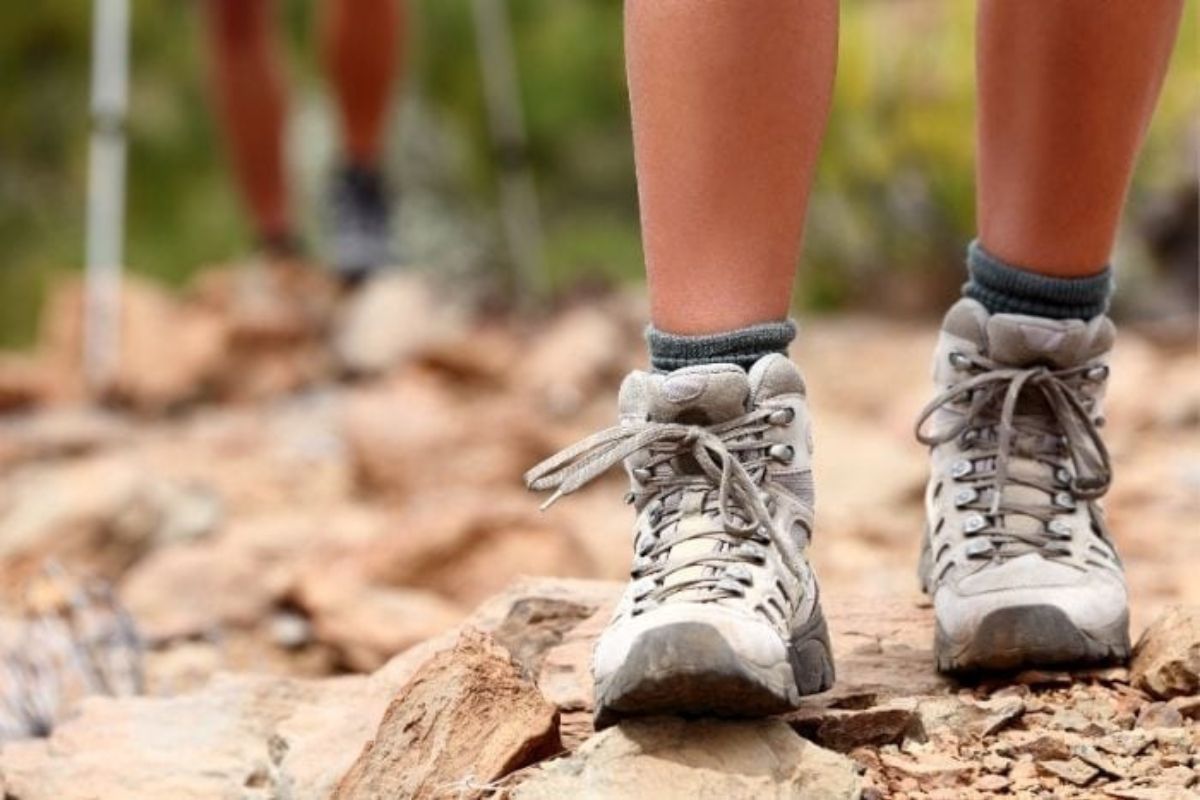
Hiking boots for the Camino de Santiago
Hiking boots
They are most suitable for doing the Camino in winter, a time when cold and rain are predominant. They will help us overcome any surface, protect us from water, and ensure good ankle support. Moreover, they are perfect for Camino routes that pass through the mountains, especially if they involve steep ascents and/or descents.
Trekking shoes
Undoubtedly, they are the best for drier and warmer periods. They won’t offer the same protection as mountain boots, but they are usually lighter and will keep your feet much cooler and drier.
Anti-blister socks
Anti-blister socks provide significant protection against chafing and moisture, common conditions along the Camino. Designed to reduce friction and provide adequate support, they are essential for preventing painful blisters and ensuring a more comfortable and safer experience. But remember, these socks help prevent blisters, but they’re not magical!
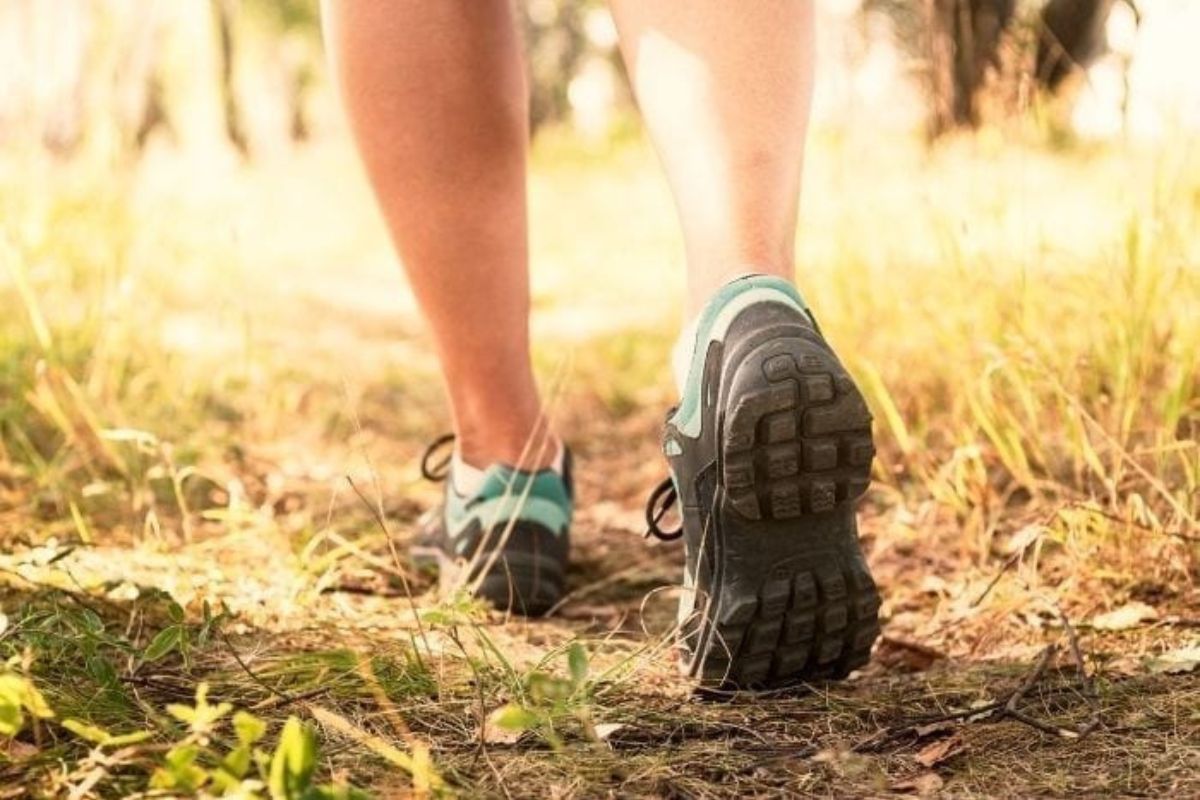
Trekking shoes for the Camino de Santiago
The importance of spare footwear
At the end of the stage, your feet will need rest to properly take care of your health during the Camino. Therefore, in addition to a refreshing shower, we recommend packing a pair of lightweight sneakers or multifunctional sandals in your backpack. The latter are perfect because, by holding the foot by the heel, you can also use them in spring or summer on some stretches of the Camino. Likewise, flip-flops are advisable as they will help you rest and air out your feet. Plus, they are essential for showers in hostels.
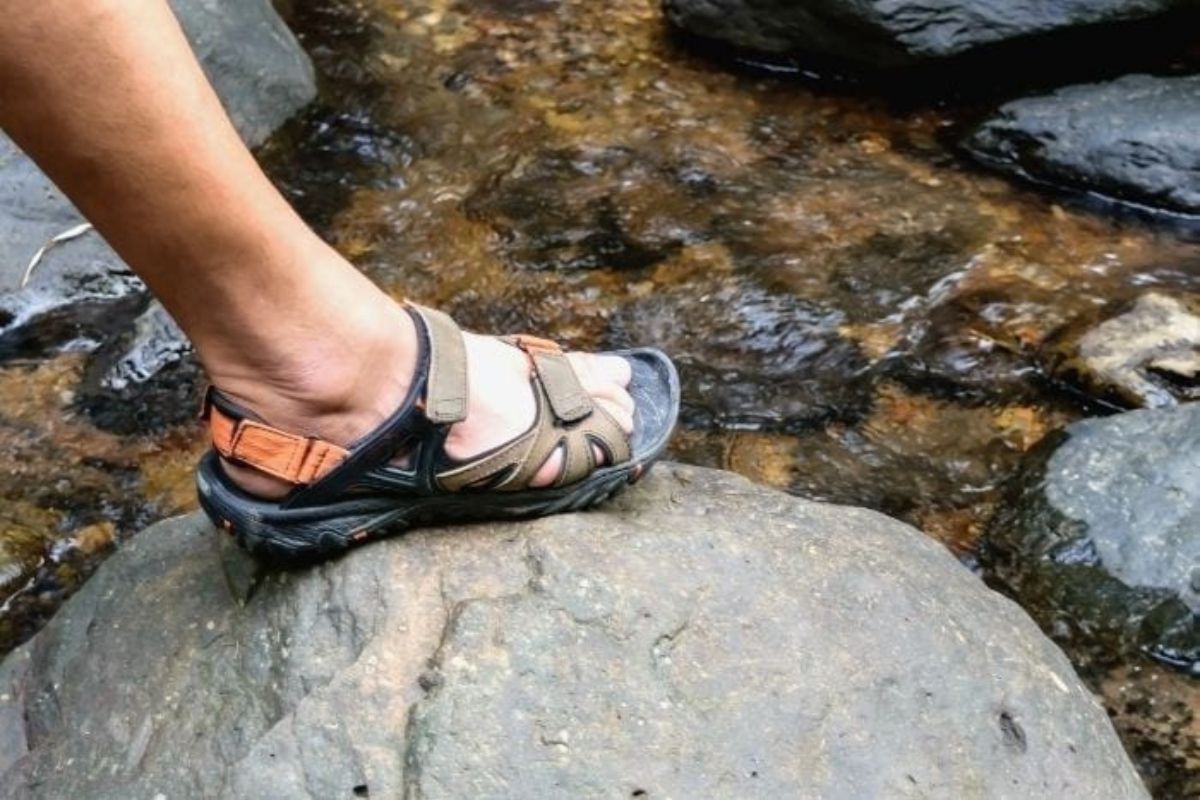
Sandals for the Camino de Santiago
Prepare your first aid kit
It’s better to prevent than to cure, so it’s highly recommended to carry a small first aid kit containing everything necessary to treat a possible wound. Ointments, suture needles, gauze, bandages, and some additional antiseptic will be very useful in case of chafing, cuts, or blisters.
For walking, drier feet are better
It’s advisable to keep your feet hydrated, but for walking, it’s important to keep them dry. If you shower before starting the stage, dry your feet well and use talcum powder to keep them dry in case of sweating.
Keep your nails in check
It’s important to keep the nails of your feet short. The constant impact of the foot with the tip of the shoe, especially during descents, can cause pain and wounds if your nails are long.
Use vaseline to take care of your feet
Using vaseline for walking is a way to keep the foot protected from chafing and, therefore, from blisters. If you feel friction with the shoe, vaseline can help prevent possible wounds.
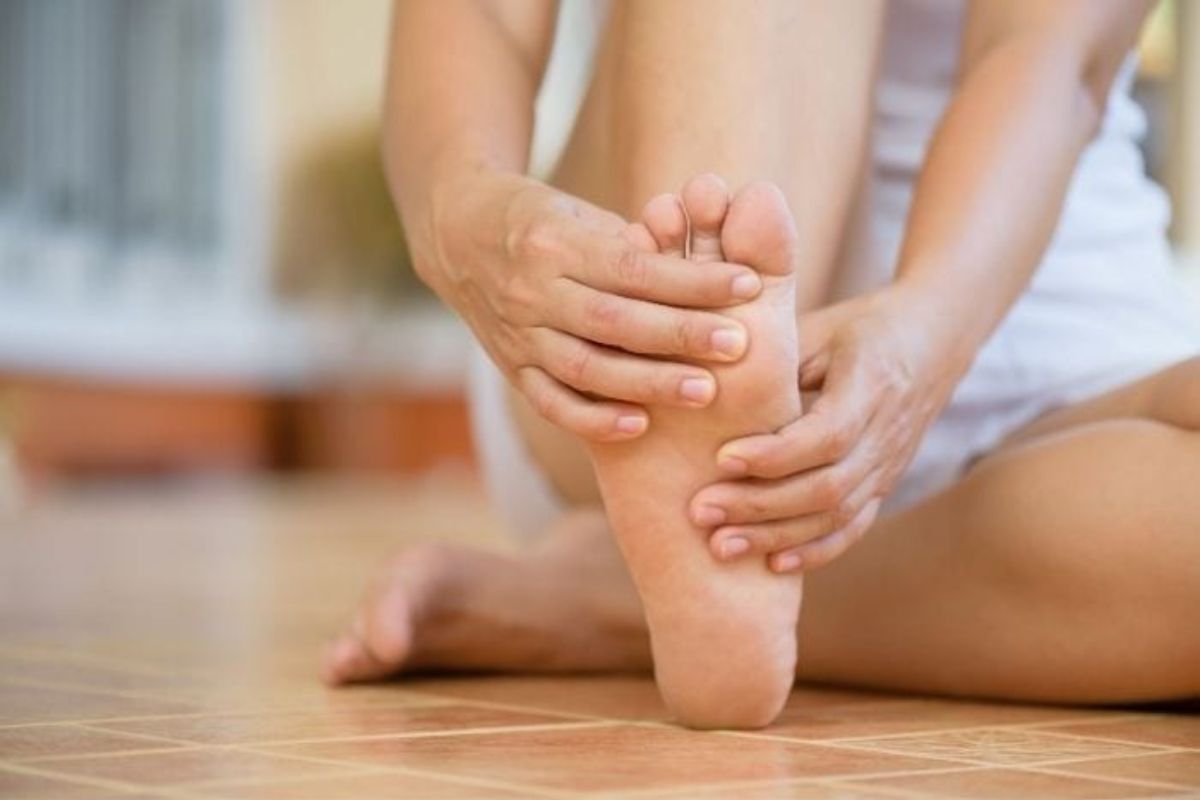
Foot care on the Camino de Santiago
How to treat a blister?
If you encounter a blister, it’s advisable not to touch it if it’s not very painful: the skin acts as the best defense against infections. However, if it’s uncomfortable to walk, you can drain it by following these steps:
- Wash your hands and the blister with soap and water, and then disinfect it externally with iodine.
- Clean a needle with alcohol to avoid contamination.
- Puncture the blister at various points to allow the fluid to drain.
- Do not remove loose skin and cover the blister with a sterile dressing.
- Carefully monitor the blister. When the dead skin comes off on its own, remove it and disinfect the area again before covering it again.
- If you experience complications or the blister shows signs of infection, seek medical attention immediately.
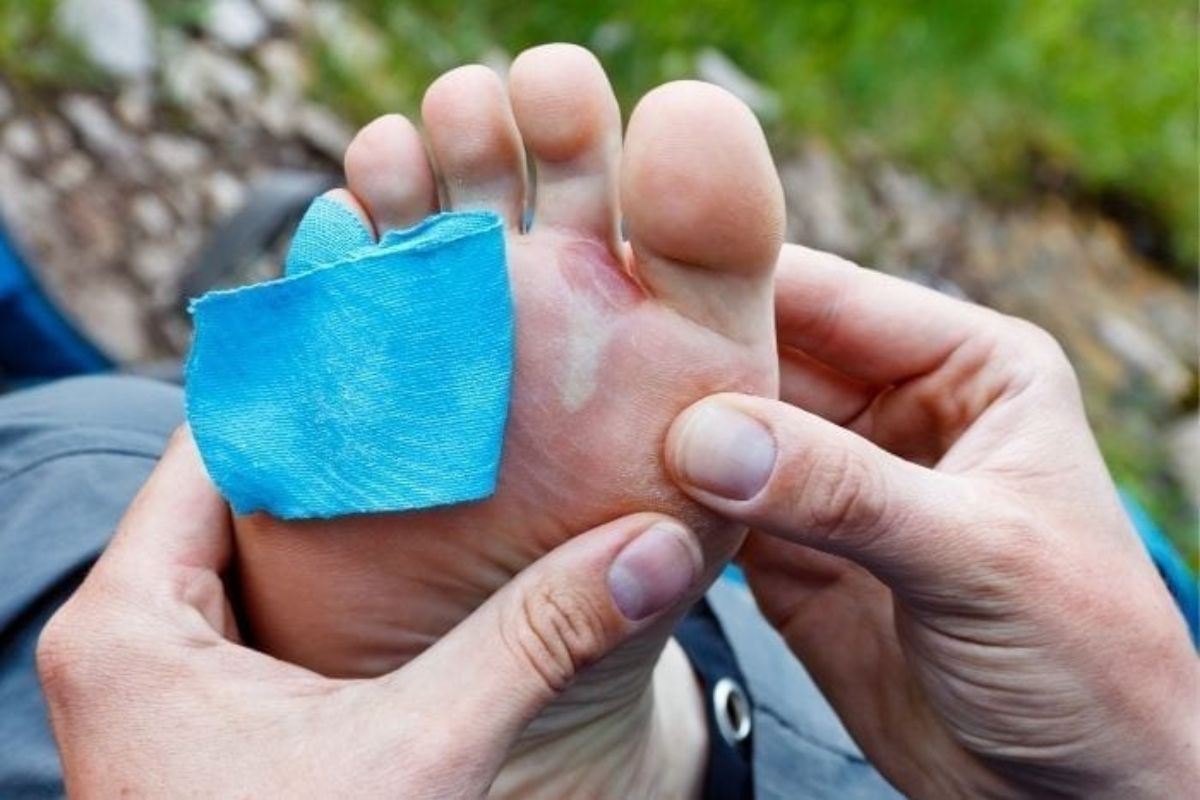
Blister on a healing foot
Hydration and massage
After a long walk, it’s ideal to massage the sole of the foot with a moisturizing cream after bathing and relax the area. This will relax the foot and keep it hydrated, so that the next day we can face the new stage without any problems.
Special attention must be paid to the feet if we decide to embark on the adventure of the Camino. After all, they are the protagonists and the ones responsible for taking us to Santiago de Compostela. Take care of them and pamper them to have a rewarding experience on your journey along the Camino de Santiago.

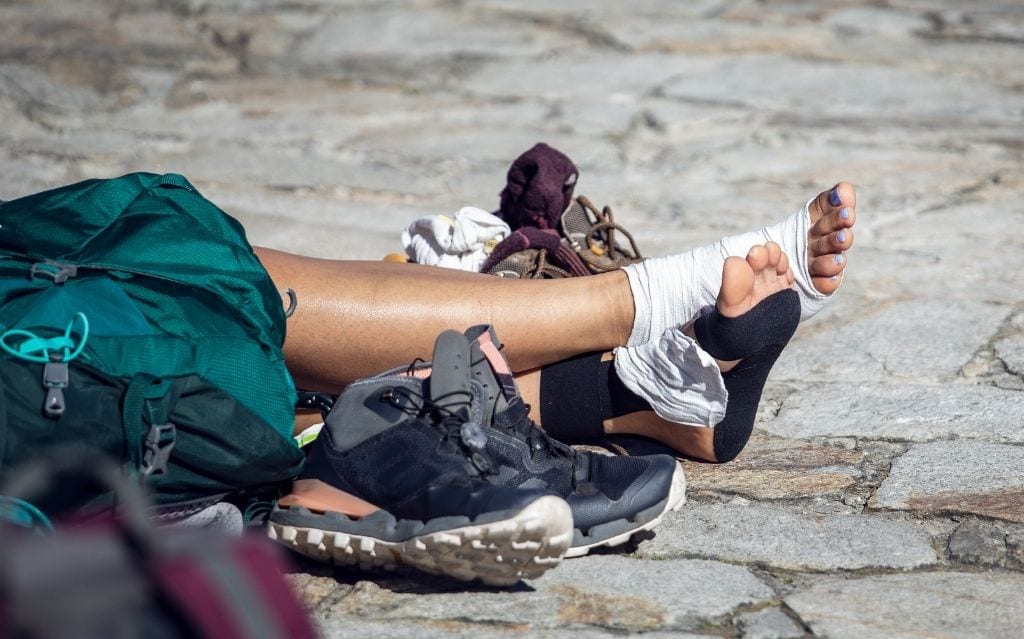


Leave A Comment